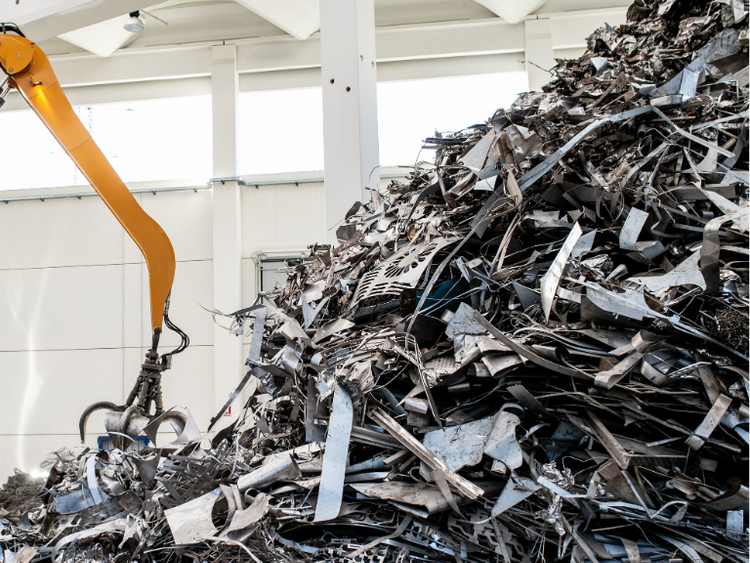Market

September 23, 2024
Wittbecker: Happenings from the 2024 Scrap Expo Louisville
Written by Greg Wittbecker
We had the opportunity this week to attend Recycling World’s Scrap Expo. The focus of this event is heavily skewed toward equipment and software solutions for the recycling industry. Given the current fixation on upgrading zorba and twitch to mill grade specifications, it was an ideal time to check out what progress is being made toward raising sortation speeds and accuracy in the sortation process. It was also a good chance to take the pulse of some of the leading commercial players in attendance.
Technical perspectives
Most of the leading OEM in sortation had displays (Austin A.I, Redwave, SG, Steinert, Tomra) highlighting their latest offerings in XRF, XRT, and LIBS technology.
Discussions with most of them led to the following conclusions:
- The accuracy of the technology continues to steadily improve, and the accuracy of alloy sortation is steadily getting better.
- Many of these systems are designed to be used in combination, with XRF and XRT often married to LIBS.
- Sortation equipment is being installed at an ever-increasing pace at shredders, where it makes the most sense to sort, as opposed to sorting at the mill, where undesirable cast fractions would then have to be resold to other consumers and additional freights incurred.
- Speed continues to be conservatively promised, ranging from four to seven tons/hour with some vendors suggesting they can get up to 10 tons per hour.
- The caveat around speed continues to evolve around shred size, combined with belt widths. Some vendors even pointed out the sensitivity to the age of the shredders feeding the sortation equipment. As shredder wear out, particle sizes tend to go down, which negatively impacts both thru-put and the accuracy of the sort. Some pointed to examples where operators anticipate this by going to wider belts to compensate.
- Several vendors also talked about sortation going through multiple passes to achieve optimal alloy segregation.
Commercial perspectives
- There were two excellent panels that focused on growth potential and the changing landscape in aluminum.
Growth frontiers: Morning panel
The growth potential panel had senior representatives from Padnos, Sims and Shapiro Metals. Several key takeaways:
- Educating suppliers and customers is the new imperative. Transparency in the supply chain is crucial to further growth. This might seem like the antithesis of the operating philosophy of most “scrappies.” Most recyclers regarded market information as a trade secret and the less said about their business, the better.
- Providing timely, accurate data to customers was an essential element of successful relationships with existing and prospective buyers.
- Technology is evolving fast to meet this demand for transparency while still providing for good profitability.
- Customers want total solutions, not just with their metallics, but help with all the materials they need to recycle as they focus on zero landfill goals.
The changing landscape of aluminum
The afternoon panel was chaired by Greg Wittbecker of Wittsend Commodity Advisors, with senior management from David Joseph, Novelis, Owl’s Head Alloy and Shapiro Metals.
Key takeaways:
- Demand for recycling metals is ever increasing with new capital projects in secondary billet joining the two major rolling mills projects underway at ADI and Novelis.
- That demand is focused on high recycled content, be it new or old scrap, with some players focusing on the post-consumer scrap to optimize the lowest possible carbon footprint.
- This heightened demand for obsolete scrap may be problematic since the supply of that scrap is dependent on lifecycles.
- Realistically, zorba derived from auto shredding offers a dependable, large-volume potential supply for rolling mills and extruders.
- That in turn, leads back to the discussion about how to get sortation speeds better synchronized to the melting rates of the big casthouses.
- UBC, the other big, readily available post-consumer scrap, does not appear to have ready solutions to raise recycling rates. None of the panelists saw new deposit legislation as likely. This leaves it up to more curbside, single-stream recovery and having to deal with the uneven quality that comes from the Municipal Recycling Facilities (MRF).
- There are growing concerns about UBC exports from the U.S. to China, where restrictions on imports of UBC have been relaxed.
- No one believed wholesale export bans on scrap were likely, but selective restrictions on some grades might be lobbied for.
- There was a consensus that mills are increasingly seeking more binary connections with major scrap generators and processors, keeping with the theme about having more transparency and control over their supply chains.
Bottom line takeaways
- Recycled metals processors are gearing up to improve the quantity and quality of their non-ferrous supply. Increased investment is being allocated toward sortation involving multiple technology platforms. Processors see strong demand-pull conditions emerging and are poised to take advantage.
- From a buyer’s perspective, there appears to be growing angst about potential scrap shortages in the next two to five years. Short-term pricing is already signaling some of this. Over the past five years, much of the incremental rise in EBITDA for mills has come from the input metal units being purchased. A narrowing of scrap spreads would seriously undermine that EBITDA trend. Mills are forming more strategic alliances with those players whom they feel can deliver both volume and quality with consistency.
Editor’s note: The views, thoughts, and opinions expressed in the content above belong solely to the author and do not necessarily reflect the opinions and beliefs of Recycled Metals Update or its parent company, CRU Group.




